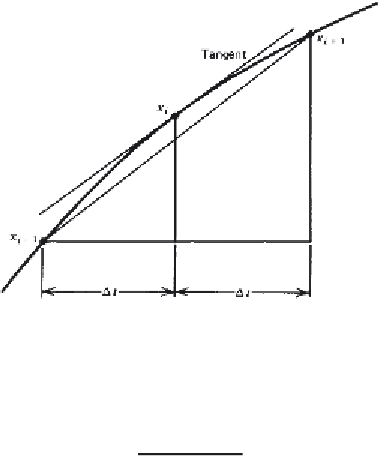Biomedical Engineering Reference
In-Depth Information
Figure 3.24
Finite-difference technique for calculating the slope of a curve at the
i
th
sample point.
at the ith sample is:
θ
i
+
1
−
θ
i
−
1
2
t
ω
i
=
rad/s
(3.16)
3.5.4 Accelerations — Linear and Angular
Similarly, the acceleration is:
Vx
i
+
1
−
Vx
i
−
1
2
t
m/s
2
=
Ax
i
(3.17)
Note that Equation (3.16) requires displacement data from samples
i
+
2
and
i
2; thus, a total of five successive data points go into the accelera-
tion. An alternative and slightly better calculation of acceleration uses only
three successive data coordinates and utilizes the calculated velocities halfway
between sample times:
−
x
i
+
1
−
x
i
t
Vx
i
+
1
/
2
=
m/s
(3.18a)
x
i
−
x
i
−
1
t
Vx
i
−
1
/
2
=
m/s
(3.18b)
Substituting these “halfway” velocities into Equation (3.17) we get:
x
i
+
1
−
2
x
i
+
x
i
−
1
m/s
2
Ax
i
=
(3.18c)
t
2
For angular accelerations merely replace displacement data with angular data
in Equations (3.17) or (3.18).














Search WWH ::

Custom Search